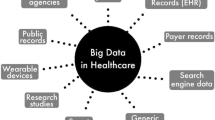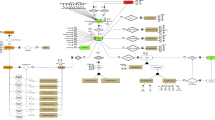Abstract
An emergency case contains important information and knowledge for emergency management, such as the evolution law of incidents, the vulnerability of hazard-affected carriers and the practice of emergency response. To respond effectively, we should learn from these valuable kinds of information and knowledge and utilize them. Most models of emergency cases are established based on ontology methodology. Important emergency information is semantically expressed and then analyzed by the text mining or cluster analysis methods. This type of methodology is at a disadvantage for obtaining the knowledge contained in the cases. In addition, some emergency case representation models are established using the event tree method or state chart method. However, not all the important information for emergencies can be integrated into these diagrams. The knowledge elements are not expressed with good structure, which results in a disadvantage to case-based reasoning and knowledge mining. In this paper, a comprehensive model for the representation of emergency cases is established. The proposed model combines the advantages of several conventional methods, including event tree, Bayesian conditional probability and information structured expression. Hazard-affected carrier properties, incident evolution laws and emergency response experience can be integrated and represented, which provides a good basis to employ data mining technology. With the proposed model, the general laws and successful emergency response experience contained in massive emergency cases can be obtained. Furthermore, the case-based reasoning and knowledge mining models for risk assessment, emergency preparedness and prevention, and decision-making can be developed based on effectively represented emergency cases.





Similar content being viewed by others
References
Buzna L, Peters K, Helbing D (2006) Modeling the dynamics of disaster spreading in networks. Phys A Stat Mech Appl 363(1):132–140
Celik AO, Kiricci V, Insel C (2017) Reassessment of the flood damage at a river diversion hydropower plant site: lessons learned from a case study. Nat Hazards 86:833–847
Chakraborty B, Ghosh D, Rrnjan R et al (2010) Knowledge management with case-based reasoning applied on fire emergency handling. In: 8th IEEE international conference on industrial informatics INDIN 2010, Osaka, Japan, pp 708–713
Cheng J, Greiner R, Kelly J (2002) Learning Bayesian networks from data: an information-theory based approach. Artif Intell 137(1–2):43–90
Cheng Z, Jia X, Wang LC, Bai YS (2010) A Framework for the case-based and model-based RCM analysis. In: International conference on E-product E-service and E-entertainment, vol 11, pp 1–4
Crichtonn MT, Lauchen K, Flin R (2005) Incident command skills in the management of an oil industry drilling incident: a case study. J Contingencies Crisis Manag 13(3):116–128
Doytchin E, Doytchev GS (2009) Combining task analysis and fault tree analysis for accident and incident analysis: a case study from Bulgaria. Accid Anal Prev 41:1172–1179
Elhalwany I, Mohammed A, Wassif KT, Hefny HA (2014) Enhancements to knowledge discovery framework of Sophia textual case-based reasoning. Egypt Inform J 15:211–220
Güdemann M, Ortmeier F (2010) A framework for qualitative and quantitative formal model-based safety analysis. In: IEEE, international symposium on high-assurance systems engineering. IEEE Computer Society, Washington, pp 132–141
Heckerman D, Geiger D, Chickering DM (1995) Learning Bayesian networks: the combination of knowledge and statistical data. Mach Learn 20(3):197–243
Huang C, Zhong SB, Li X, Zhang FS, Chen JG, Su GF, Huang QY, Yuan HY (2014) Foundations of intelligent systems. In: Advances in intelligent systems and computing, vol 277. Springer, Berlin, pp 911–919
Ji XW, Weng WG, Fan WC (2008) Cellular automata-based systematic risk analysis approach for emergency response. Risk Anal 28(5):1247–1260
Kaisera B, Gramlichb C, Forster M (2007) State/event fault trees: a safety analysis model for software-controlled systems. Reliab Eng Syst Saf 92:1521–1537
Krupka J, Kasparova M, Jirava P (2009) Case-based reasoning model in process of emergency management. Man Mach Interact 59:77–84
Liu YH (2009) A case learning model for ship collision avoidance based on automatic text analysis. In: Proceedings of the eighth international conference on machine learning and cybernetics, Baoding, 12–15 July, pp 2199–2204
Liu JF, Zou P, Zhang PZ, Jia ZQ (2009) Task-oriented capability requirement analysis using an ontology-based case reasoning method. In: 2009 international conference on computational intelligence and software engineering, vol 12, pp 1–4
Mendonca D (2007) Decision support for improvisation in response to extreme events: Learning from the response to the 2001 World Trade Center attack. Decis Support Syst 43:952–967
Patterson D, Rooney N, Galushka M, Dobrynin V, Smirnova E (2008) SOPHIA-TCBR: a knowledge discovery framework for textual case-based reasoning. Knowl Based Syst 21:404–414
Peters K, Buzna L, Helbing D (2008) Modeling of cascading effects and efficient response to disaster spreading in complex networks. Int J Crit Infrastruct 4(1/2):46–62
Portinale L, Magro D, Torasso P (2004) Multi-modal diagnosis combining case-based and model-based reasoning: a formal and experimental analysis. Artif Intell 158:109–153
Shaker HE, Mohammed E (2015) Case based reasoning: case representation methodologies. Int J Adv Comput Sci Appl 6(11):192–208
Smith W, Dowell J (2000) A case study of co-ordinative decision-making in disaster management. Ergonomics 43(8):1153–1166
Wang D, Xiang Y, Zou GB, Zhang B (2009) Research on ontology-based case indexing in CBR. In: 2009 international conference on artificial intelligence and computational intelligence, vol 11, pp 238–241
Acknowledgements
The authors deeply appreciate support for this paper by the National Natural Science Foundation of China (Grant No. 71673161), the Fundamental Research Funds for the Central Business Unit (Grant No. 512015Y-4002) and the Youth Talent Fund of Beijing (Grant No. 512016Z-4983).
Author information
Authors and Affiliations
Corresponding author
Rights and permissions
About this article
Cite this article
Zhang, C., Wu, J., Huang, C. et al. A model for the representation of emergency cases. Nat Hazards 91, 337–351 (2018). https://doi.org/10.1007/s11069-017-3131-9
Received:
Accepted:
Published:
Issue Date:
DOI: https://doi.org/10.1007/s11069-017-3131-9




